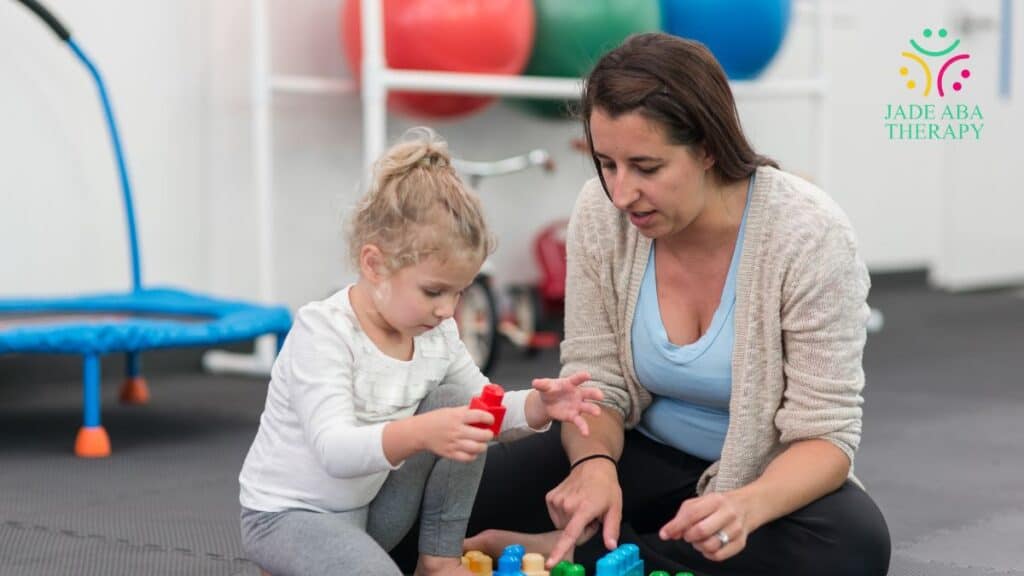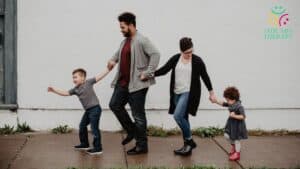Key Points:
- A BCBA designs, supervises, and updates ABA therapy plans, while an RBT delivers daily sessions, collects data, and follows the BCBA’s direction.
- Clear oversight and supervision requirements ensure ethical practice, protect children, and keep treatment decisions in the hands of certified clinicians.
- Families benefit from understanding BCBA vs RBT roles, as this knowledge clarifies who sets goals, who provides daily teaching, and how progress is measured and adjusted.
BCBA vs RBT describes two key roles in ABA therapy. The BCBA creates and supervises treatment plans, while the RBT delivers daily sessions and tracks progress. Knowing the difference helps families understand who does what, how progress is tracked, and what to expect during care.
How BCBA and RBT Work Together: An Overview
A Board Certified Behavior Analyst (BCBA) leads clinical decision-making. The BCBA evaluates strengths and needs, writes the treatment plan, trains the team, and adjusts strategies based on data.
A Registered Behavior Technician (RBT) provides daily one-to-one therapy and records progress while following the BCBA’s plan and direction. This pairing balances expert design with consistent, compassionate delivery across home, school, and community settings.
- BCBA duties include assessment selection, goal writing, data review, caregiver training, and supervision.
- RBT duties include running sessions, implementing teaching procedures, and documenting results while seeking guidance when needs change.
- Oversight requirements keep services aligned with ethics and best practice, tying hands-on work to a clinician’s plan.
Roles in Action: Assessment, Planning, and Daily Treatment
Families often meet the BCBA first for a structured intake and behavioral assessment. The BCBA uses observation, caregiver interviews, and standardized tools to define goals like communication, daily living, or behavior reduction.
The BCBA then writes the treatment plan with clear targets, teaching procedures, and how progress will be measured. The RBT learns the plan, practices the steps, and delivers the sessions where skills are needed most.
- Assessment and plan: The BCBA selects methods, writes behavior intervention plans, and sets data systems.
- Session delivery: The RBT runs trials and naturalistic teaching, reinforces success, and logs each attempt.
- Course corrections: The BCBA reviews charts, observes sessions, and revises goals when growth stalls or new skills emerge.
A CDC report estimates about 1 in 31 children aged 8 years are identified with autism, underscoring the need for organized teams that can scale quality care to more families.

What Families Should Expect
The difference between RBT and BCBA extends to how supervision is structured. The BACB requires RBTs to receive ongoing supervision equal to at least 5% of monthly service hours, with observation of service delivery and at least two real-time contacts each month.
Supervision can be individual or small-group; at least one contact must be individual, and at least one should include direct observation of the RBT working with your child.
Watch for these elements during the month:
- Observation of a live session, with feedback the same day or soon after.
- Data review that tracks goals and celebrates gains while targeting barriers.
- Parent training that turns strategies into routines families can use between sessions.
Training and Credentials: How Each Role Qualifies
The comparison of RBT vs BCaBA highlights two different roles in ABA therapy. The BCBA is a graduate-level clinician who meets education, fieldwork, and exam requirements before certification and ongoing continuing education.
The RBT is a paraprofessional who completes a 40-hour training, passes a competency assessment, clears background and abuse-registry checks, and passes a certification exam. Both roles follow an ethics code and must keep certification active through set maintenance steps.
Key details families can ask about:
- BCBA preparation includes supervised fieldwork (1,500–2,000 hours depending on the pathway) and a board exam.
- RBT preparation includes a 40-hour course, an initial competency assessment, and a board exam.
- Ethics and quality: Both roles must follow BACB ethics codes, with oversight structures in place.
Growth and Access: What the Workforce Looks Like Now
Access improves when more trained team members are available. The BACB’s 2024 Annual Data Report shows 82,681 individuals newly certified as RBTs in 2024 and 196,579 RBTs active by year-end, reflecting substantial growth across the entry-level segment.
That scale gives agencies flexibility to build teams where a BCBA can direct programs and RBTs can bring plans to life day to day.
For families, these numbers mean shorter waitlists in some areas and more capacity to match staff to a child’s schedule. RBT wage varies by region, hours, and funding source.
Agencies set wages within local market ranges while maintaining required supervision and training. Families can also ask about training ladders and mentorship opportunities under the BCBA to understand how direct support staff grow in their roles.
Daily Therapy: What RBT Sessions Look Like
RBT sessions follow the BCBA’s plan and emphasize practice in natural settings like home-based ABA therapy. A typical visit may begin with a brief warm-up, a review of visual schedules or rewards, and time to run structured teaching sets.
The RBT captures data collection for each skill and provides planned breaks to keep motivation steady. The BCBA sets mastery criteria so skills move forward without delay.
Expect the RBT to:
- Teach communication using prompts and fading that foster independent requests.
- Build daily living skills like dressing steps, utensil use, or toileting routines.
- Generalize gains by practicing skills in different rooms or during community outings.
The distinction between RBT vs ABA therapist often creates confusion. Many agencies use “ABA therapist” as a general title for the RBT who provides therapy sessions under BCBA guidance. The RBT role, however, is a formal certification from the BACB that requires training, testing, and structured supervision, while “ABA therapist” may simply serve as a descriptive job title.
Home, School, and Community: Where Each Role Shows Up
The difference between ABA and RBT is important when looking at how care is delivered. The BCBA coordinates across settings so skills transfer. The BCBA may join IEP meetings, advise teachers on reinforcement and prompting, and align goals with school services.
The RBT follows the same teaching steps across locations, with small adjustments approved by the BCBA. Consistency across places speeds learning.
What families can track:
- Setting alignment: Are the same goals practiced at home and in school?
- Skill generalization: Are skills used during meals, playdates, or errands?
- Plan updates: Do graphs show progress that informs the next step?
Career Track: From RBT to Advanced Roles
Agencies often support RBTs who want to grow into lead tech roles or, with further education, pursue BCaBA or BCBA certification. RBT experience helps future clinicians understand implementation realities and caregiver needs.
If you are exploring “How to get my RBT?” or are searching related terms like “RBT how to become,” here are the core steps based on the current BACB handbook:
- Complete the 40-hour training within the required time frame.
- Pass a background and abuse-registry check.
- Complete the initial competency assessment with a qualified assessor.
- Apply and pass the exam.
- Maintain supervision and ethics requirements.

BCBA vs RBT: Decisions Families Actually Make
The BCBA vs RBT question becomes practical when matching needs to roles. If your child needs new goals or a plan rewrite, ask for a BCBA observation and reassessment. If your child needs steady practice and consistent reinforcement, RBT hours drive progress.
When behavior spikes or skills plateau, the BCBA adjusts the plan and may increase observation time or change teaching strategies.
A few planning tips:
- Start with function: The BCBA identifies functions of behavior and targets skills that meet the same need.
- Protect dosage: RBT schedules should deliver enough trials and practice opportunities each week.
- Embed family routines: Coaching ensures strategies fit meals, chores, and bedtime, so learning continues between visits.
Safety and Ethics: What Keeps Services Accountable
Quality ABA depends on strict adherence to ethics codes and supervision rules. The RBT Ethics Code and BCBA ethics requirements define scope, competence, documentation standards, and proper responses to concerns.
The RBT must work only under supervisors listed in the BACB registry. If a supervisor is not active in the system, the RBT is considered inactive and may not practice. These safeguards protect children and ensure that treatment changes come from the licensed or certified clinician overseeing care.
A common question is, “Are ABA and RBT the same?” is answered by noting that ABA is the therapeutic approach, while RBT is the credential for the paraprofessional who delivers those procedures under BCBA oversight.
Quick Compare: Who Does What (And How It Affects Your Week)
Clear role boundaries help families set expectations from day one. Use this quick reference during your first month of care:
- Plan ownership: The BCBA writes and updates the plan; the RBT implements it and reports trends.
- Data decisions: The BCBA interprets graphs and changes goals; the RBT collects high-quality data every session.
- Supervision dose: The RBT receives at least 5% of monthly hours in supervision with real-time contacts and observation.
A common point of clarity is BCaBA vs RBT. In many programs, a BCaBA provides day-to-day feedback, helps coach RBTs, and shares progress updates with the BCBA who directs overall care.
Choosing a Provider: Questions That Keep Care on Track
Strong programs welcome family questions. Ask these during intake to clarify BCBA vs RBT responsibilities and ensure alignment:
- Who is my supervising BCBA, and how often will they observe sessions and meet with us? Ask for a schedule that meets or exceeds the BACB minimums.
- How are RBTs trained on my child’s plan before starting? Look for competency checks, role-play, and shadowing led by the BCBA.
- How is progress graphed and reviewed? Expect regular data meetings, clear mastery criteria, and plan updates when growth slows, informed by signs ABA therapy is working.
- What is the escalation pathway if behavior changes? Ensure the BCBA can adjust strategies quickly and coach the team that week.
Frequently Asked Questions
What is the highest paid RBT?
The highest paid RBT earns up to $43/hour, or about $89,440/year at 2,080 hours. Top-paying states include Washington, the District of Columbia, and New York. High-paying metros include Las Vegas and Atlanta. Overtime, evening or weekend differentials, and senior or lead roles further increase total pay.
Is RBT only for autism?
RBT scope answers “Is RBT only for autism?” with no. RBT certification authorizes behavior-analytic work beyond autism under BACB supervision standards. ABA methods serve diverse settings and populations. Workforce patterns place many RBTs in autism services. Agency roles include behavior support in IDD, education, and mental health.
Which is higher, ABA or RBT?
The main difference between ABA and RBT lies in scope and credential level. ABA refers to the overall therapy field, while RBT is a specific entry-level certification within it. RBTs implement behavior plans designed by supervisors, whereas BCBAs, who hold graduate degrees, oversee treatment design and RBT supervision.
Get In-Home Support That Aligns Roles to Your Goals
A clear division of work speeds growth: the BCBA designs and adjusts; the RBT practices the plan where life happens. In-home ABA therapy in Maryland and Virginia brings those pieces together with coaching that turns skills into habits across meals, chores, and play.
Jade ABA Therapy builds programs around your priorities with transparent supervision, measurable targets, and caregiver training that fits busy schedules. If you want a team that explains decisions and shows progress in simple graphs, reach out to schedule an intake and see how a BCBA-led, RBT-delivered model can support everyday independence.




